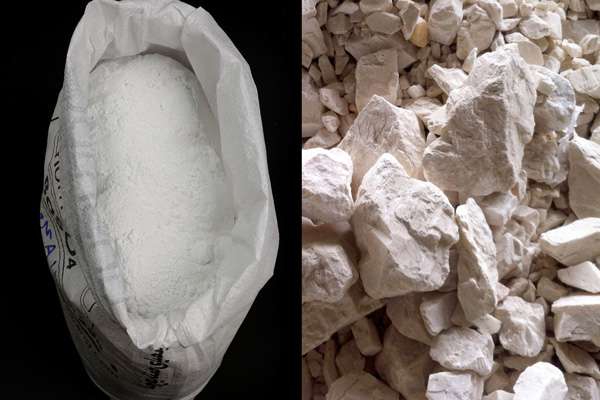Barium sulfate is a versatile compound widely used in a range of industries—from automotive coatings to medical imaging. However, it’s essential to distinguish between two common forms of this material: natural barite and precipitated barium sulfate (often referred to as blanc fixe). Though both share the same chemical formula (BaSO₄), they differ significantly in production methods, particle structure, purity, and applications. Understanding these differences is critical for selecting the right material for your industrial needs.
What Is Barite?
Barite, or baryte, is a naturally occurring mineral composed of barium sulfate. It is typically extracted from sedimentary rocks and is found in various colors, including white, gray, brown, blue, or even black, depending on its source and impurity content. Due to its high specific gravity and chemical stability, barite has a wide range of uses:
- Oil and Gas Drilling: One of the largest markets for barite is oil well drilling, where it’s used as a weighting agent in drilling muds. It increases hydrostatic pressure and helps prevent blowouts.
- Medical Imaging: In powder form, barite is used as a contrast agent for X-ray and CT scans, particularly in gastrointestinal diagnostics. It is non-toxic and provides excellent X-ray opacity.
- Paints and Coatings: Barite acts as a filler and extender, enhancing the density and durability of paints, especially for marine and industrial applications.
- Glass and Ceramics: Barite improves thermal resistance in glass and crystal products.
- Concrete Production: Due to its density, barite is used in heavy concrete for radiation shielding in hospitals and nuclear facilities.
What Is Precipitated Barium Sulfate (Blanc Fixe)?
Precipitated barium sulfate, also known by its French name blanc fixe (“permanent white”), is a synthetic compound produced through a controlled chemical reaction—typically by combining barium salts with sulfate sources. The result is a fine, white, highly pure powder with very consistent properties.
Key characteristics of blanc fixe include:
- Ultrafine particle size
- High chemical purity
- Uniform shape and texture
- High oil absorption
- Superior brightness and whiteness
These properties make precipitated barium sulfate ideal for high-end applications:
- Automotive and Industrial Paints: Blanc fixe enhances color intensity, opacity, and gloss in coatings.
- Plastics and Polymers: It acts as a filler that increases chemical resistance and mechanical strength.
- Printing and Paper: Adds weight and improves optical properties in specialty papers.
- Cosmetics and Pharmaceuticals: Its non-reactive and non-toxic nature allows use in personal care products and as an X-ray contrast agent.
How Do Barite and Precipitated Barium Sulfate Differ?
| Feature | Barite (Natural) | Precipitated Barium Sulfate (Blanc Fixe) |
|---|---|---|
| Source | Mined from natural deposits | Produced via chemical precipitation |
| Purity | Varies by mine and location | Extremely high (often 99.9%) |
| Particle Size | Coarser, variable | Ultra-fine, consistent |
| Whiteness | Moderate (unless highly processed) | Very high |
| Oil Absorption | Lower | Higher |
| Price | Generally more economical | More expensive due to refining process |
| Applications | Drilling, cement, marine coatings | High-end coatings, plastics, cosmetics |
When Should You Use Precipitated Barium Sulfate?
Choose blanc fixe when:
- Visual quality matters, such as in automotive paints, high-end plastics, or glossy papers.
- You require fine, uniform particles to improve coating texture and surface quality.
- Purity is critical, especially in pharmaceuticals and cosmetics.
- You need to boost opacity or gloss in thin coatings or films.
Key Considerations When Choosing Barium Sulfate for Your Product
- Particle Size Distribution
Finer particles offer more surface area, improving texture, dispersion, and opacity. - Purity Levels
Higher purity results in more predictable performance—especially important in pharmaceuticals and sensitive manufacturing environments. - Compatibility with Additives
Ensure the filler integrates well with binders, resins, and other additives in your formulation. - Cost Efficiency
Natural barite may be preferred in high-volume, low-cost applications. Blanc fixe, while more expensive, adds value through improved performance.
Final Thoughts
Both barite and precipitated barium sulfate are indispensable in modern industries, but they serve different purposes. Barite is your go-to for heavy-duty, bulk-use applications, while blanc fixe is the preferred option when purity, aesthetics, and performance precision are paramount.
Understanding these differences not only improves product performance but also optimizes cost-efficiency and customer satisfaction. Whether you’re formulating paints, plastics, drilling fluids, or pharmaceuticals, choosing the right form of barium sulfate is a decision that should align with both technical requirements and market expectations.
For reliable sourcing and expert consultation on high-quality barium sulfate—natural or precipitated—reach out to trusted suppliers who understand your industry’s unique demands.


